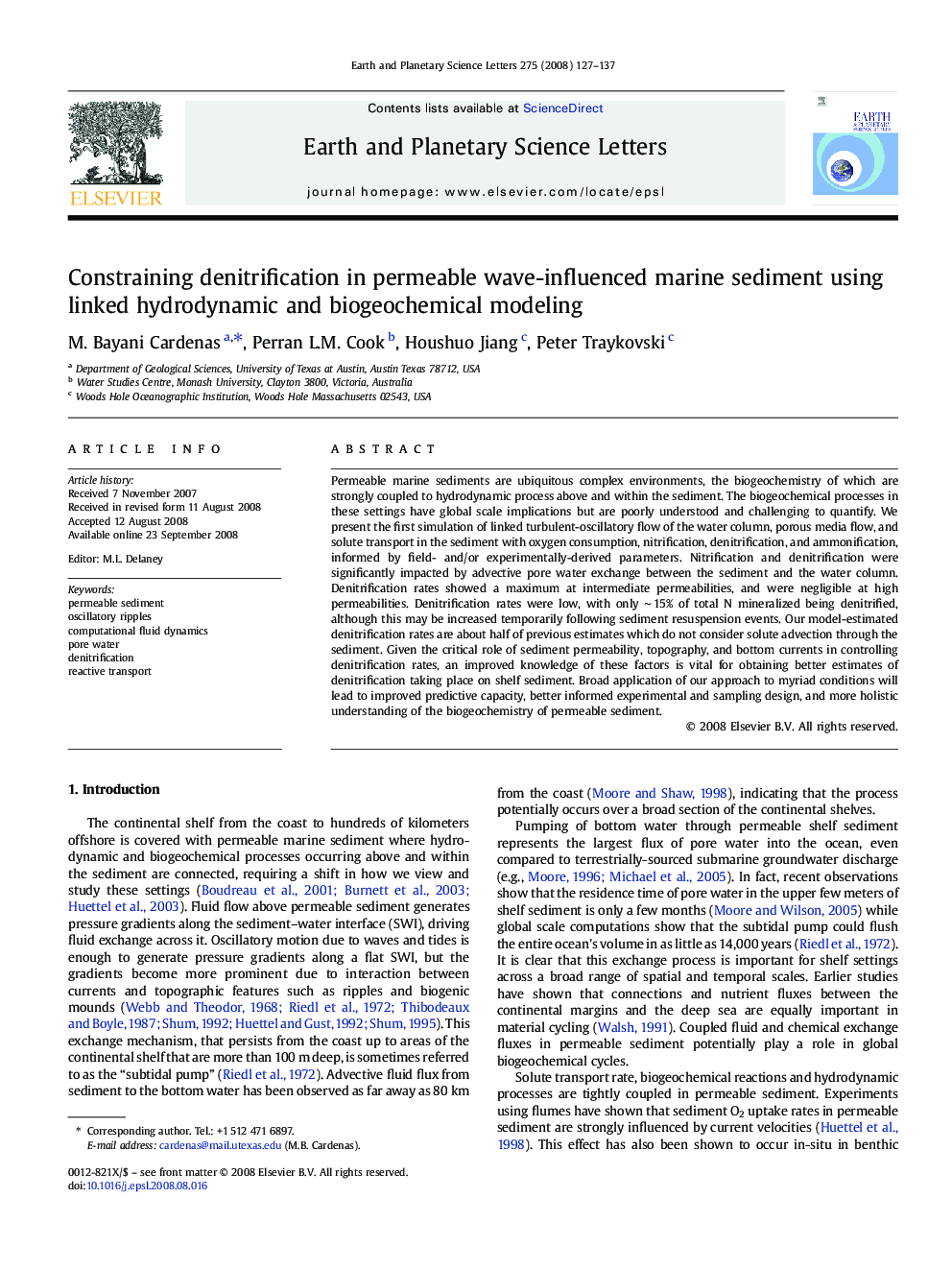| Article ID | Journal | Published Year | Pages | File Type |
|---|---|---|---|---|
| 4679452 | Earth and Planetary Science Letters | 2008 | 11 Pages |
Permeable marine sediments are ubiquitous complex environments, the biogeochemistry of which are strongly coupled to hydrodynamic process above and within the sediment. The biogeochemical processes in these settings have global scale implications but are poorly understood and challenging to quantify. We present the first simulation of linked turbulent-oscillatory flow of the water column, porous media flow, and solute transport in the sediment with oxygen consumption, nitrification, denitrification, and ammonification, informed by field- and/or experimentally-derived parameters. Nitrification and denitrification were significantly impacted by advective pore water exchange between the sediment and the water column. Denitrification rates showed a maximum at intermediate permeabilities, and were negligible at high permeabilities. Denitrification rates were low, with only ∼ 15% of total N mineralized being denitrified, although this may be increased temporarily following sediment resuspension events. Our model-estimated denitrification rates are about half of previous estimates which do not consider solute advection through the sediment. Given the critical role of sediment permeability, topography, and bottom currents in controlling denitrification rates, an improved knowledge of these factors is vital for obtaining better estimates of denitrification taking place on shelf sediment. Broad application of our approach to myriad conditions will lead to improved predictive capacity, better informed experimental and sampling design, and more holistic understanding of the biogeochemistry of permeable sediment.
